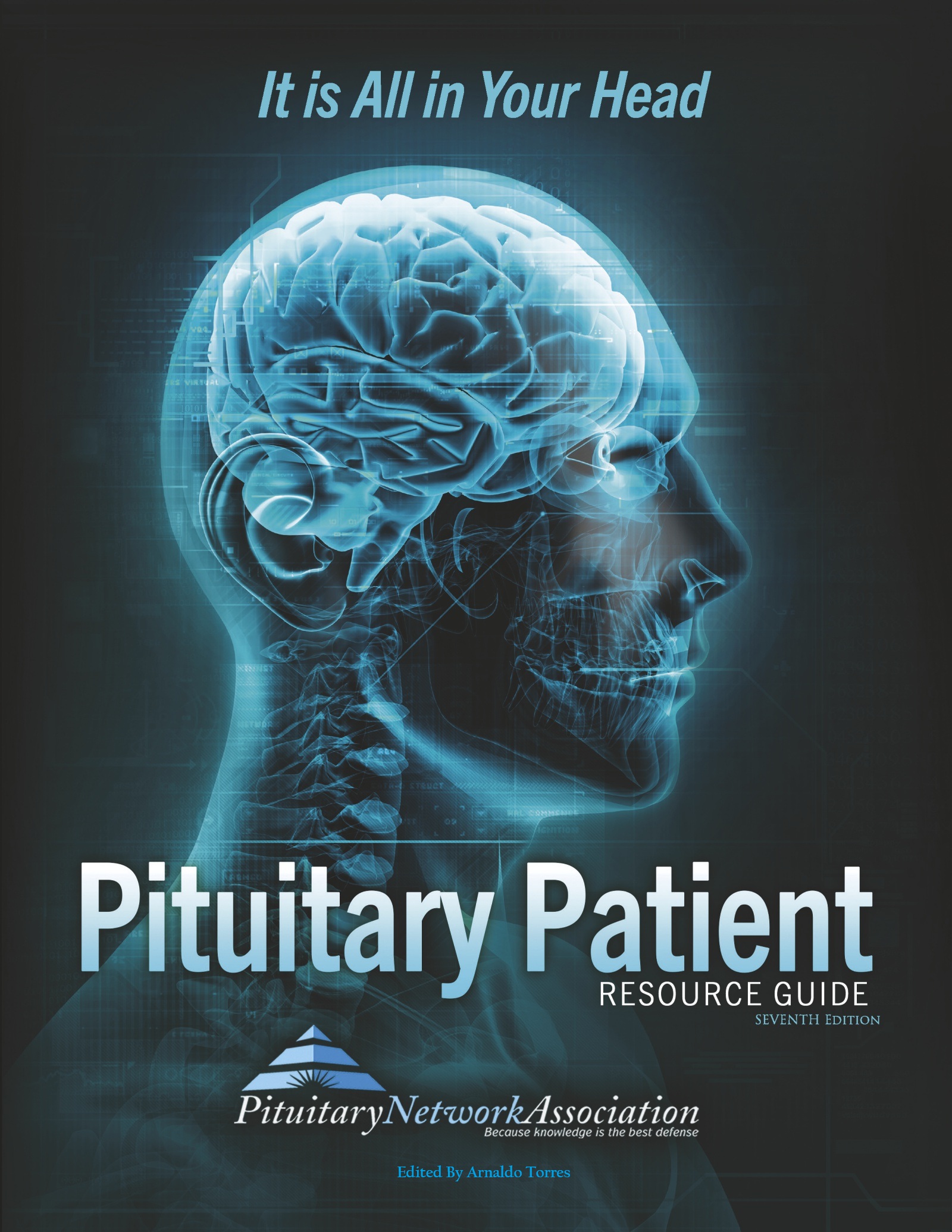Pituitary Glossary starting with E
Edema
An accumulation of an excessive amount of watery fluid in cells, tissues, or serous cavities (swelling).
Edema means swelling by an excessive amount of watery fluid accumulated in the intercellular spaces, most commonly present in subcutaneous tissue. It usually occurs in the feet, ankles and legs, but it can involve the entire body.
Edema may be brought on by eating too much salt, sunburn, heart failure, kidney disease, cirrhosis of the liver, pregnancy, lymph node disorder, medicines, exercise in warm temperatures. Diuretics may be given as medication for edema.
ELISA
Enzyme-linked immunosorbent assay.
ELISA stands for enzyme-linked immunosorbent assay. It is a commonly used laboratory method to detect antibodies in the blood as a result of being exposed to viruses or other infectious substances.
Embolus, pl. Emboli, Embolism
A plug, composed of a detached blood clot, mass of bacteria, or other foreign body, blocking a vessel.
A thrombus that travels from the blood vessel or heart to another location in the body is called an embolus. The disorder is called an embolism. For example, an embolus that occurs in the lungs is called a pulmonary embolism.
Sometimes other materials can act like an embolus and block blood flow, including:
• Air
• Amniotic fluid
• A piece of atherosclerotic plaque
• Fat clumps
• Small pieces of tumor
Emesis
Vomiting.
Vomiting, stomach upset, or Nausea is a complex, coordinated reaction orchestrated by the brain responding to signals coming from the mouth, stomach, intestines, bloodstream, balacing systems in the ear (motion sickness), or due to unsettling sights, smells or thoughts.
Encapsulated
Confined to a specific, localized area and surrounded by a thin layer of tissue.
Refers to a tumor that is wholly confined to a specific area, surrounded by a capsule. Localized.
Encephalography
Radiographic representation of the brain.
Encephalography is the examination of the brain by radiography after the withdrawal of cerebrospinal fluid (by lumbar or cisternal puncture) and introduction of air, another gas, or contrast material.
Electroencephalography uses electrodes placed on the scalp to detect and measure patterns of electrical activity emanating from the brain. In recent years, EEG has undergone technological advances that have increased its ability to read brain activity data from the entire head simultaneously. EEG can determine the relative strengths and positions of electrical activity in different brain regions. By tracking changes in this activity during such drug abuse-related phenomena as euphoria and craving, scientists can determine brain areas and patterns of activity that mark these phenomena. The greatest advantage of EEG is speed-it can record complex patterns of neural activity occurring within fractions of a second after a stimulus has been administered. The biggest drawback to EEG is that it provides less spatial resolution than fMRI and PET do. As a result, researchers often combine EEG images of brain electrical activity with MRI scans to better pinpoint the location of the activity within the brain.
Endocrine Glands
Those parts of the body which produce and secrete (release) hormones.
Examples include pituitary, thyroid, adrenal, testicles, ovaries, parathyroid glands, etc.
Endocrinologist
A doctor who specializes in diseases of the endocrine glands and their hormones.
A doctor who specializes in diagnosing and treating hormone disorders and diseases that affect the edocrine glands. Endocrinologists are trained to diagnose and provide treatment for hormone imbalances by helping to restore the normal balance of hormones in the system. Resulting illnesses caused by endocrine disorders include; diabetes, thyroid diseases, metabolic disorders, lack or excess production of hormones, menopause, osteoporosis, hypertension, cholesterol (lipid) disorders, infertility, cancers of the pituitary or endocrine glands.
Endocrinology
The study of the endocrine glands and their hormones.
A science dealing with the ductless glands that secrete substances (hormones) which are released directly into the circulation and which influence metabolism and other body functions.
Endovaginal
Within the vagina (the genital canal in the female, extending from the uterus to the vulva).
Endovaginal (within the vagina) ultrasound; or transvaginal (across or through the vagina) or pelvic ultrasound; a diagnostic method using a probe vaginally to inspect a woman’s reproductive organs. This method is used in diagnosing birth defects, infections such as pelvic inflammatory disease, cancers and non-cancerous growths of the uterus, ovaries, vagina, and other pelvic structures.
Enema
The injection of liquid into the intestine by way of the anus.
The injection of a liquid through the anus into the large bowel. A Barium enema is a procedure in which a liquid with barium in it is put into the rectum and colon by way of the anus. Barium is a silver-white metallic compound that helps to show the image of the lower gastrointestinal tract on an x-ray.
Epidemology
The study of the distribution of disease and its impact upon a population, using such measures as incidence, prevalence, or mortality.
Epidemiology is the study of factors determining and influencing the frequency and distribution of disease, injury, and other health related events and their causes in a defined human population. Epidemiology Branch investigators study a wide range of health effects linked to environmental exposures. Endpoints range from birth defects to chronic diseases, often with a focus on specific environmental contaminants. Studies typically include the collection of biological and environmental samples for assay of biomarkers of exposure or genes that affect susceptibility. The Epidemiology Branch portfolio includes multipurpose cohort studies, as well as focused studies of reproductive and women’s health, children’s environmental health, and cancer and chronic disease. Its mission is “to apply and extend the tools of epidemiology to study effects of the environment on human health.”
Etiology
The study of the cause of a disease.
The cause or causes of a disease or abnormal condition; also the research or studying of the causes and origin of diseases.






